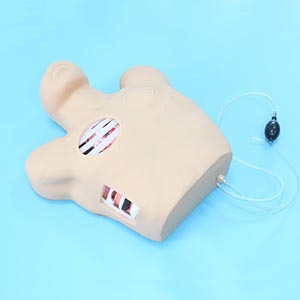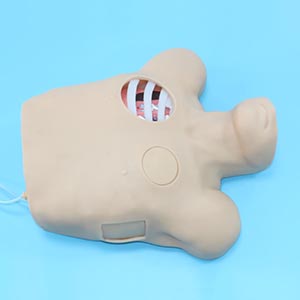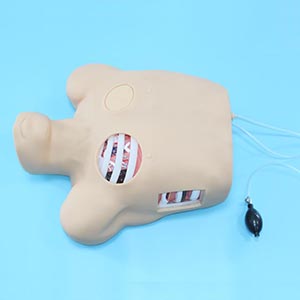Welcome to visitShanghai Chinon medical Model & Equipment Manufacturing Co., LTD
Thoracentesis is a clinical skill with high technical requirements and fine operation. The training model helps medical students and medical staff improve their skills in a risk-free environment by providing opportunities for repeated practice. The following is the specific role of the thoracentesis training model in improving skills:
The training model can simulate the real thoracic anatomy and pathology, such as pneumothorax and pleural effusion. By interacting with the model, students are able to better understand and adapt to different clinical situations and develop the ability to handle complex cases.

The advanced training model is equipped with functions such as pressure sensitivity and fluid reflux to provide real-time feedback on the accuracy of the puncture operation. For example, the model can monitor the needle insertion Angle, depth, and selection of puncture points, and help students adjust operational strategies through data feedback. Studies have shown that by repeatedly practicing with training models, students' operational accuracy has improved by about 30% (source: a journal of Medical Education).
Repeated practice facilitates the automation of operational skills, enabling students to perform the piercing quickly and accurately in the face of real patients. The data show that after 10 hours of model training, the accuracy of the students in the actual operation has increased by 15%-20%.

Model training not only helps improve piercing skills, but also helps participants identify potential operational errors in a risk-free environment. For example, a puncture that is too deep can lead to organ damage, and training models can correct these errors in advance, thereby reducing the incidence of complications in clinical procedures. According to relevant statistics, after the simulation training, the trainees' error rate was reduced by 18% (source: American Medical Education Association study).

In summary, the thoracic puncture training model greatly improves the technical level of medical students and medical staff by simulating clinical situations, providing data feedback, promoting skill automation and reducing operational errors, and lays a solid foundation for actual clinical operations.
|
NEXTпјҡWhy are gastric anatomical models so important in clinical practice?
LASTпјҡCan human acupuncture Model Man help you improve your healing skills? |
Return list |